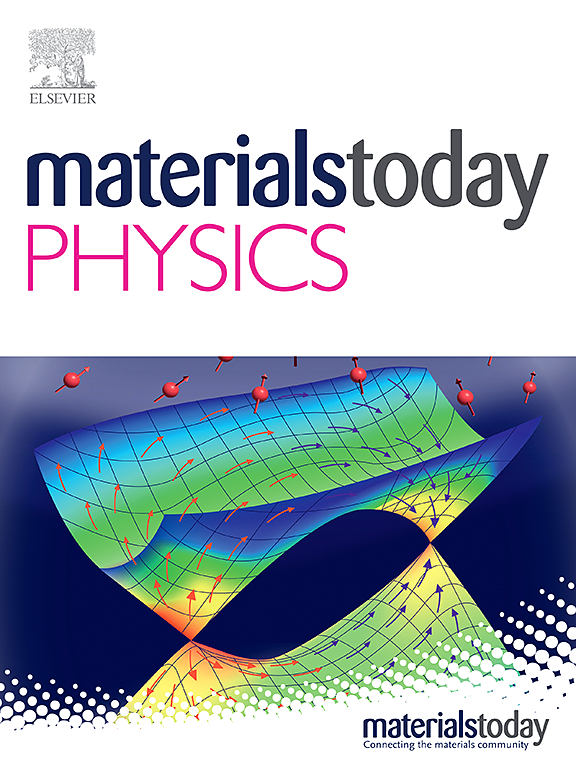Experimental studies of copper porous microfin composite structures for immersion phase-change liquid cooling
IF 10
2区 材料科学
Q1 MATERIALS SCIENCE, MULTIDISCIPLINARY
引用次数: 0
Abstract
Currently, the rapid development of digital economy and artificial intelligence urgently needs a dramatic increase in computing power, posing a huge challenge to develop advanced microporous copper materials for chip cooling. However, the maximal heat flux (qmax) of copper micro/nanostructures reported by all peers for immersion phase-change liquid cooling (IPCLC) is only 59 W cm−2 with the surface temperature (TS) of simulated chip heat source reaching the upper limit of 85 °C. Here, we report a novel copper porous microfin (CPMF) composite structure with IPCLC performance outperforming those of all peers’ reported micro/nanostructures. Through the rational design of geometrical parameters, its qmax can reach 76 W cm−2 with TS being 69 °C, much lower than the allowable upper limit of chip case temperature. Such remarkable IPCLC performance originates from the skillful trade-off among rich nucleation sites, low interface thermal resistance, strong capillary liquid supply and innate vapor-liquid separation of the optimal CPMF composite structure heat sink featured with small microspheres, dense and short porous microfins, and properly-thick porous underlayer. This work not only helps deepen understanding into how hierarchical microporous structures rationally design to enable efficient IPCLC but also provides an advanced IPCLC solution with practical prospect.


铜多孔微鳍复合材料浸没相变液体冷却实验研究
当前,数字经济和人工智能的快速发展迫切需要计算能力的大幅提升,这对开发用于芯片冷却的先进微孔铜材料提出了巨大的挑战。然而,在模拟芯片热源的表面温度(TS)达到85℃的上限时,所有同行报道的铜微纳米结构浸泡相变液冷(IPCLC)的最大热流密度(qmax)仅为59 W·cm-2。在这里,我们报道了一种新型的铜多孔微鳍(CPMF)复合结构,其IPCLC性能优于所有同行报道的微/纳米结构。通过合理设计几何参数,在TS为69℃时,其qmax可达76 W cm-2,远低于芯片外壳温度的允许上限。这种卓越的IPCLC性能源于微球小、多孔微鳍致密而短、多孔底层厚度适中的CPMF复合结构热沉在丰富的成核位点、低界面热阻、强毛细管供液和固有的汽液分离之间的平衡。这项工作不仅有助于加深对分层微孔结构如何合理设计以实现高效IPCLC的理解,而且为IPCLC提供了具有实用前景的先进解决方案。
本文章由计算机程序翻译,如有差异,请以英文原文为准。
求助全文
约1分钟内获得全文
求助全文
来源期刊

Materials Today Physics
Materials Science-General Materials Science
CiteScore
14.00
自引率
7.80%
发文量
284
审稿时长
15 days
期刊介绍:
Materials Today Physics is a multi-disciplinary journal focused on the physics of materials, encompassing both the physical properties and materials synthesis. Operating at the interface of physics and materials science, this journal covers one of the largest and most dynamic fields within physical science. The forefront research in materials physics is driving advancements in new materials, uncovering new physics, and fostering novel applications at an unprecedented pace.
 求助内容:
求助内容: 应助结果提醒方式:
应助结果提醒方式:


